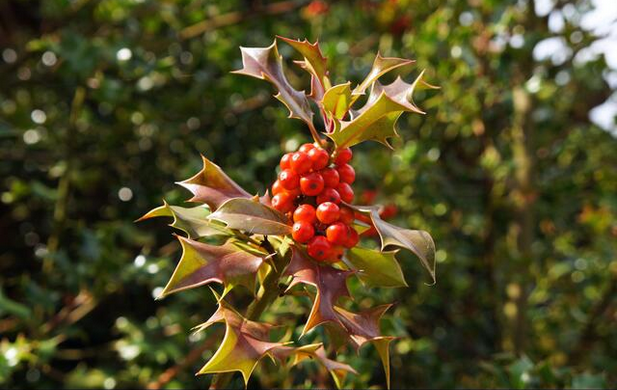
At the heart of winter, when darkness reaches its apex and the longest night of the year unfolds, Wiccans gather to celebrate Yule—the winter solstice sabbat marking the sun’s rebirth and the gradual return of light. Observed around December 21st in the Northern Hemisphere, Yule represents a profound moment of transition in the Wheel of the Year and carries deep spiritual significance for practitioners of Wiccan traditions.
Historical Foundations
Yule’s origins extend far back into pre-Christian European traditions, particularly those of Germanic and Norse peoples who celebrated “Jul” or “Jól” during the midwinter period. Archaeological evidence suggests that Neolithic cultures across Europe built monuments aligned with the winter solstice, such as Newgrange in Ireland, where the rising solstice sun illuminates an inner chamber only on this special day.
Ancient celebrations focused on ensuring survival through the harsh winter months and maintaining hope for spring’s eventual return. Common themes included:
- Honoring the sun’s rebirth after its apparent weakening
- Kindling sacred fires to strengthen the returning light
- Feasting to maintain community bonds during scarce times
- Decorating with evergreens as symbols of persistent life
When Wicca emerged as a modern spiritual tradition in the mid-20th century, these ancient winter celebrations were incorporated as one of the eight sabbats in the Wheel of the Year, preserving and reinterpreting their rich symbolism for contemporary practice.
Spiritual Significance
The Rebirth of the Sun/Son
In many Wiccan traditions, Yule represents the rebirth of the God—often conceptualized as the Divine Child or Sun God born from the Goddess. This mythology mirrors the astronomical reality of the sun beginning its journey back toward strength after reaching its lowest point on the horizon.
Light Amid Darkness
Yule embodies the paradoxical truth that light is reborn at the moment of greatest darkness. This powerful symbolism speaks to the Wiccan understanding of life’s cyclical nature, where endings contain beginnings and darkness nurtures the potential for light.
Death and Rebirth
As part of nature’s continuous cycle, Yule honors the necessary period of death and dormancy that precedes renewal. The seeming stillness of winter contains the sleeping potential of spring, teaching valuable lessons about trusting natural processes even when progress isn’t visible.
Traditional Observances
The Yule Log
Central to many Wiccan Yule celebrations is the Yule log—traditionally a large oak log decorated with seasonal greenery, doused with ale or cider, dusted with flour, and lit using a piece preserved from the previous year’s log. The log was meant to burn for twelve days, with its preserved remnant protecting the home until the following year.
Modern adaptations include:
- Smaller logs that serve as candle holders
- Group rituals where each participant lights a candle from a central Yule log
- Symbolic Yule logs made of cake or other festive foods
Evergreen Decorations
Evergreens feature prominently in Yule celebrations, representing eternal life and resilience:
- Holly (masculine energy, protection)
- Ivy (feminine energy, growth even in harsh conditions)
- Pine and fir (immortality and perseverance)
- Mistletoe (peace, fertility, and the sphere between worlds)
Solstice Vigil
Many traditions include keeping vigil from sunset to sunrise on the solstice night, witnessing the rebirth of the sun at dawn. This practice honors the transformative darkness and celebrates the returning light with renewed appreciation.
Modern Wiccan Celebrations
Contemporary Wiccans observe Yule in diverse ways according to their tradition and personal practice:
Solitary Observances
Individual practitioners might:
- Create Yule altars decorated with evergreens, red and green candles, and solar symbols
- Perform personal rituals focusing on releasing the old year and setting intentions for the new solar cycle
- Engage in meditation on themes of inner light during outer darkness
- Craft Yule decorations with magical intention
Coven Celebrations
Group rituals often include:
- Ceremonial circle-casting acknowledging the unique energy of the solstice
- Dramatic enactment of the God’s rebirth
- Sharing of light through candle-lighting ceremonies
- Exchange of meaningful gifts representing personal growth
Feasting and Merriment
In keeping with ancient traditions, Yule celebrations typically involve:
- Shared meals featuring seasonal foods
- Wassailing (blessing orchards and sharing spiced drinks)
- Creating and sharing Yule logs (often in cake form)
- Singing, storytelling, and other communal activities that strengthen bonds during winter’s isolation
Seasonal Foods and Symbols
Foods traditionally associated with Yule celebrations include:
- Nuts and dried fruits (preserved summer abundance)
- Spiced beverages like mulled wine and cider
- Root vegetables and winter squashes
- Pork and wild game
- Gingerbread and spice cakes
Key symbols include:
- The Yule log
- Evergreen plants, especially holly and mistletoe
- Candles and lights
- Solar wheels and discs
- Red, green, gold, white, and silver colors
- Bells and chimes
Yule in the Southern Hemisphere
Wiccans in the Southern Hemisphere typically celebrate Yule around June 21st, aligning with their local winter solstice. This adaptation demonstrates Wicca’s emphasis on connecting spiritual practice with the natural cycles as they actually manifest in one’s environment.
Contemporary Significance
For modern practitioners, Yule offers several meaningful opportunities for spiritual engagement:
Finding Inner Light
The festival encourages turning inward to discover the light that persists even during life’s darkest periods, fostering resilience and hope.
Honoring Natural Cycles
In a culture that often resists seasonal changes and natural rhythms, Yule reminds us to honor nature’s wisdom in creating times of both activity and rest.
Creating Community
Winter’s challenges historically required stronger community bonds for survival. Yule celebrations foster connection and mutual support during a season often marked by isolation.
Embracing Rebirth
The solar rebirth symbolism invites personal renewal—releasing what no longer serves and setting intentions for the coming cycle of growth.
Through its rich symbolism of light reborn from darkness, Yule offers contemporary Wiccans a meaningful connection to ancient winter traditions while providing a spiritually nurturing framework for navigating life’s challenges with hope, celebrating cyclical renewal, and honoring the necessary balance of darkness and light in both nature and human experience.
